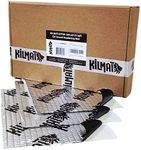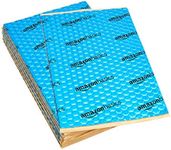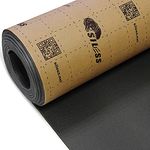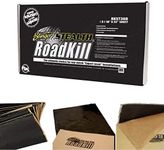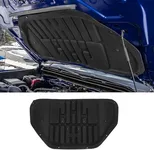Buying Guide for the Best Sound Deadeners
Choosing the right sound deadener can significantly improve the comfort and quality of your living or driving experience by reducing unwanted noise. Sound deadeners are materials designed to reduce or eliminate sound transmission from one area to another. They are commonly used in vehicles, homes, and studios to create a quieter environment. When selecting a sound deadener, it's important to consider several key specifications to ensure you get the best product for your needs.Material TypeThe material type of a sound deadener is crucial because it determines the effectiveness and application of the product. Common materials include butyl rubber, foam, and asphalt-based products. Butyl rubber is highly effective and durable, making it ideal for automotive use. Foam is lightweight and easy to install, suitable for home and studio applications. Asphalt-based products are generally cheaper but can emit odors and are less effective in extreme temperatures. Choose a material based on where you plan to use the sound deadener and the level of noise reduction you need.
ThicknessThickness is a key factor in the performance of a sound deadener. Thicker materials generally provide better sound insulation but can be more challenging to install and may add more weight. Thicknesses typically range from 1mm to 10mm or more. For automotive use, a thickness of 2mm to 4mm is often sufficient to reduce road noise and vibrations. For home or studio use, thicker materials (5mm to 10mm) may be more appropriate to block out external noise effectively. Consider the level of noise you are dealing with and the ease of installation when choosing the thickness.
Coverage AreaThe coverage area refers to the amount of space a sound deadener can cover, usually measured in square feet. This is important to ensure you purchase enough material to cover the desired area. Sound deadeners are often sold in rolls or sheets, with coverage areas ranging from 10 to 100 square feet or more. Calculate the total area you need to cover and consider buying a little extra to account for any mistakes or adjustments during installation. For a car, you might need around 50 square feet, while a room in a house might require 100 square feet or more.
Adhesive QualityThe adhesive quality of a sound deadener determines how well it will stick to surfaces and how long it will last. High-quality adhesives ensure that the material stays in place over time, even in challenging conditions like high temperatures or moisture. Look for products with strong, heat-resistant adhesives, especially for automotive applications. For home or studio use, a good adhesive is still important but may not need to withstand as extreme conditions. Check user reviews and product descriptions to gauge the adhesive quality before making a purchase.
Ease of InstallationEase of installation is an important consideration, especially if you plan to install the sound deadener yourself. Some products come with self-adhesive backing, making them easier to apply, while others may require additional tools or adhesives. Look for products that are user-friendly and come with clear instructions. If you are not confident in your DIY skills, you might want to choose a product that is known for its ease of installation or consider hiring a professional. The easier the installation, the more likely you are to achieve effective soundproofing.
Temperature ResistanceTemperature resistance is a critical factor, especially for automotive applications where the interior can experience extreme temperatures. Sound deadeners with high temperature resistance will not melt, crack, or lose their adhesive properties in hot or cold conditions. This ensures long-lasting performance and durability. For home or studio use, temperature resistance is still important but may not need to be as high. Check the product specifications for temperature ratings and choose one that matches the environmental conditions of your intended use.
